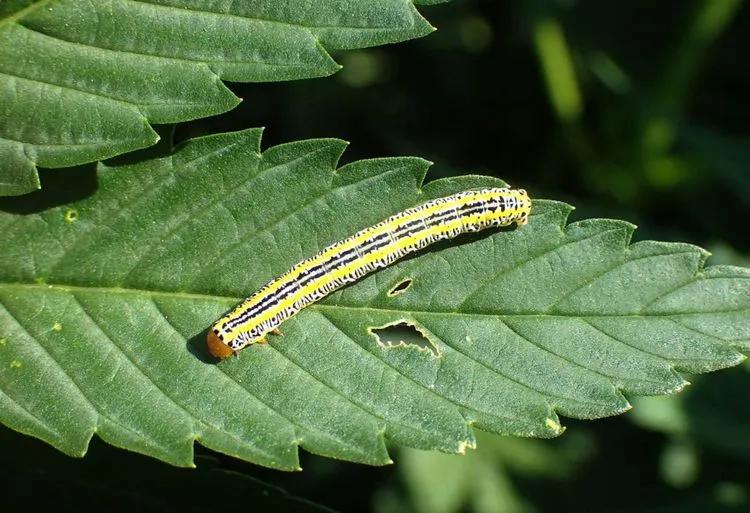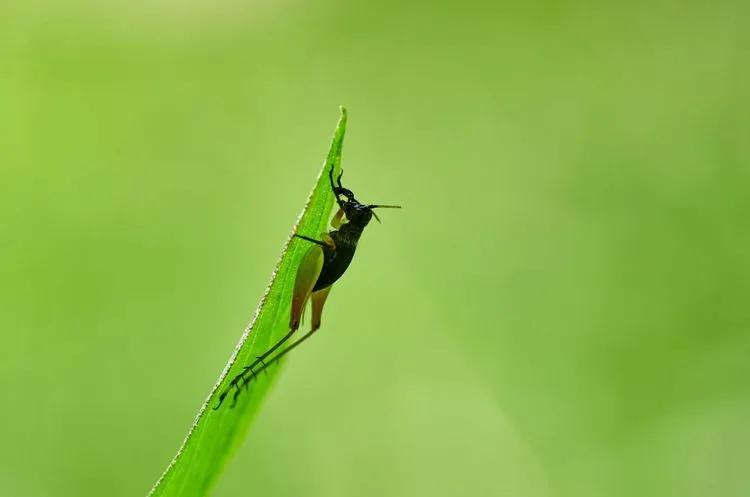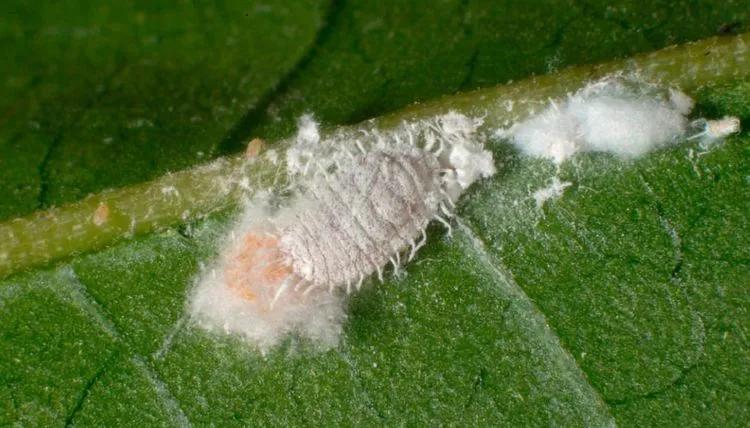Pay attention that growing marijuana may be subject to special restrictions and regulation in your country or state. Please contact your attorney to obtain advice before cultivating cannabis.
Cannabis pests are one of the most common growing problems. Information about the types of insects and how to deal with them is a must for study because whoever is warned is armed.
The instruction on the topic "How to get rid of cannabis pests" contains four points:
- Pest detection and identification
- Removal of the infected area (leaves/branches) or the entire plant.
- Isolation. It is best to carry it as far away from other plants as possible (if indoors).
- Treatment with a special organic / chemical agent.
So, the main types of pests, how they manifest themselves, and how to get rid of them.
Aphids

It comes in white, green, yellow, red, black and brown. It settles in colonies on the lower part of branches and leaves. In affected plants, leaves weaken and turn yellow. Important! The waste product of aphids is nectar, which serves as a nutritional basis for fungi (rabble) and attracts ants. Cleansing is carried out with a powerful spray bottle with water, then treated with insecticidal soap. Melia oil (Neem tree or Tulip tree) is also used. If not available, an insecticide designed for food plants will do.
Caterpillars

The main symptoms of their appearance are leaves bitten from the side or eaten away in the middle, as well as black or brown mucus.
Drive out the butterflies as quickly as possible and in the easiest way. On the street, the easiest way to fight is to collect the caterpillars by hand. In the house - use herbal decoctions based on pepper knotweed, black henbane, and red elderberry. They are sometimes mixed with soapy water. Lipidocide, Bitoxibacillin will cope with a large-scale disaster.
Crickets

These insects also eat plants. It won't be difficult to catch them in boxing. For prevention, the soil, where insects make holes, is treated with red pepper or a decoction of wormwood. Tulip tree oil helps as well. Don’t use Karbofos - this substance is dangerous to health.
Sciaridae (mushroom gnat)

3-4 mm in size winged insects of black or brown color (adults) and light gray 1-2 mm (young). Adults are dangerous only because they carry larvae of other pests on their paws. The real threat is the larvae. 3-5mm in size white with a blackhead. They live at a depth of 6-8 cm in the ground, feed on decomposition products of organic matter and fungi. They slow down growth, harm the roots, and lead to the death of the plant. Flocks of small flies and a bunch of white larvae on the ground are hard to miss.
The plant begins to weaken and wither. Leaves turn yellow and become stained. It is necessary to dry the soil in which the hemp grows, do not water it for several days, and sprinkle it with food diatomaceous earth (diatomaceous earth), these pests love moisture. Install yellow glue traps (available in gardening stores). Use bacillus thuringiensis insecticides. In case of severe damage - 3% hydrogen peroxide with water 1: 4. True, then you need to apply a lot of fertilizers since the mixture will simply kill all the organic matter in the soil. But this is the last resort.
Cicadas

In nature, there are more than 20 thousand species of them, a distinctive feature is the "jagged" front pair of legs. They hide on the back of the foliage. Signs are pale dots on the leaves that turn brown over time. If there are many pests, then the leaves turn yellow and die off, since all the moisture is sucked out by leafhoppers. An insecticide with Spinosad base, Tulip tree oil, or tincture of tobacco and garlic helps. 2/3 cigarette butts and 2-3 cloves of garlic, passed through a press, are poured into a 1-liter jar. Pour with water, leave for 24 hours, dilute with water, and spray.
Mealybug (hairy lice)

Insects 3-6 mm pink or white with a powdery coating, bristles on the sides and wings in males. They settle in colonies in leaf axils and young shoots. When damaged, the plant becomes covered with a white bloom, like cotton wool or thick cobwebs. They provoke the appearance of the mob (sooty fungus). Plants slow down in development.
Pests are manually removed from the stake with tweezers or knocked down with a powerful spray bottle from leaves and branches. Insecticidal soap helps, as well as a tincture of 3-4 teaspoons of horsetail and 100 ml of alcohol. Mix with 1 liter of water and process. As a supplement - food grade diatomaceous earth. It is poured onto the affected areas and soil. Adults are best harvested by hand. They can even start in dry harvested material. It is necessary to check healthy plants after detection of infection for a minimum of 14 days.
Spider mites

Brown, gray, brown, or green insects 0.5 mm. Almost invisible to the simple eye. They settle on the underside of leaves, more often you can find their eggs. White or yellow spots first appear on the affected foliage, then the entire leaf turns yellow or becomes bronze and dies off. Over time, a cobweb appears.
It is not only the plant that needs to be washed. The grow box is cleaned, the water trays are boiled. It is also necessary to increase the airflow to the plant and soil. It will help to lower the temperature to the minimum allowable (20-21⁰С). As a chemical agent - special acaricides or insectoacaricides. Harvesting cannot be done for several weeks after processing. Food diatomaceous earth, an alcohol solution with water 1: 9, a soap solution followed by washing will also not be superfluous for the next 2 days after the acaricide. Then, treat again with a chemical agent.
Important! Repeat the treatment after a few weeks with another acaricide.
Whiteflies

1.5-3 mm winged insect with a bloom-like flour. Visible to the naked eye, the larvae are attached to the bottom of the leaf. The foliage is first covered with a bloom of white (honeydew), then blackens (twill fungus). The plant slows down growth, the leaves turn yellow, curl and die off.
Remove the leaves, set the yellow glue trap. The usual fumigator from adults and insecticidal soap for larvae help. From chemicals - Aktara, Fitoverm. In the house, reflective screens are used to combat the larvae, since they are afraid of sunlight. Aim at the bottom of the leaves and monitor the intensity of the rays to avoid burning the foliage.
Thrips

1-2 mm insects are gray, brown, or black. The larvae are gray, yellow, and white. Symptoms are similar to spider mites but are larger and more irregular in shape. The leaves turn yellow and die off. Insects are removed manually and from a spray bottle, treated with insecticidal soap, a decoction of pepper, mustard, yarrow, and tobacco. It helps to remove the top 4-5 cm of soil and replace it with a new one. Use Fitoverm, Vermitic or Agravertin. Repeat the treatment of an isolated bush 3-4 times with an interval of 7 days.
Remember that insecticides are dangerous to humans, therefore, it is strictly not recommended to harvest or use them immediately after processing.
